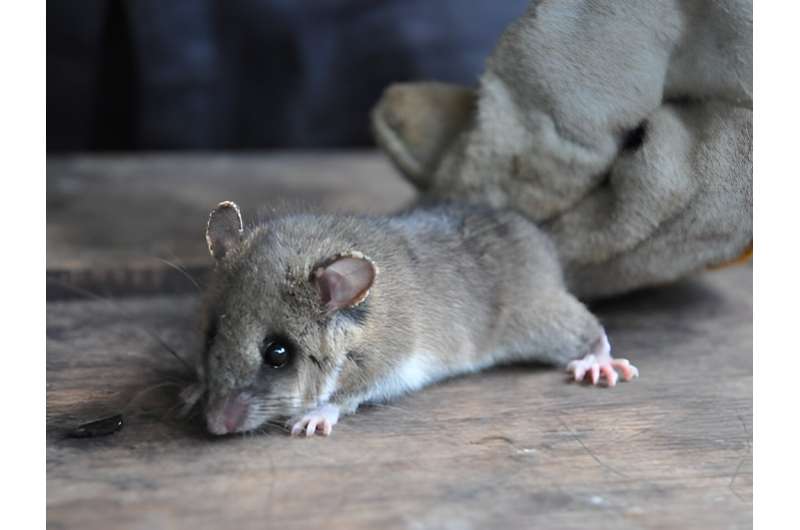This article has been reviewed according to Science X's editorial process and policies. Editors have highlighted the following attributes while ensuring the content's credibility:
fact-checked
peer-reviewed publication
proofread
Researchers identify new species of tuft-tailed rat in Madagascar

In an international effort, researchers have identified a previously unknown tuft-tailed rat (genus Eliurus) taxon in the Montagne d'Ambre forest in northern Madagascar, underscoring the region's extraordinary biodiversity. This discovery, published in Molecular Phylogenetics and Evolution, comes against a severe backdrop of habitat loss and fragmentation, threatening the survival of these unique species.
Madagascar, recognized as a hotspot of biodiversity, faces increasing challenges from habitat loss. Researchers at the IGC have been conducting fieldwork in Madagascar since 2005 and have captured small mammals (mouse lemurs, invasive rats, and endemic rats) since 2010. The tuft-tailed rat stands out as the most speciose genus of endemic rodents in Madagascar, with 13 described species.
These rodents inhabit two major habitat types—dry and humid forests, making them an ideal model for studying species adaptation to diverse environments and their responses to habitat loss. During this study, the research team acquired animal samples, extracted DNA, and obtained genomic data with partner institutions in Toulouse.
In what is the first genomic study carried out on endemic rodents of Madagascar, researchers compared genomic data across all individuals sampled in northern Madagascar. They also compared mitochondrial DNA obtained for these samples with the most extensive database, which had DNA sequences on most Eliurusspecies (10 out of the 13 recognized).
Gabriel Sgarlata and Lounès Chikhi, the study's first and last author, say that "adding a 14th species is thus quite a surprise for the team. We applied many approaches to check that the identified taxon differed from the closest taxa."
The findings didn't stop there. According to the researchers, the study revealed that "some of these species are also present in the humid forests of northern Madagascar. This is contrary to earlier understandings that these species were primarily found in the dry forests of western Madagascar."
The IGC Population and Conservation Genetic group leader and CNRS researcher, Lounès Chikhi, states, "The findings of a high occurrence of dry-adapted Eliurus species in humid habitats suggest that some of these species may contain genetic information that could contribute to our understanding of the past climatic change and past connectivity."
"In addition, this could be a great model to study the genomic basis of adaptation to dry and humid habitats," says the researcher, stressing the need to sample and conduct fieldwork in forests and natural environments in Madagascar and worldwide.
Overall, the discovery shows how genomic data are essential for species discovery, especially in groups with little morphological diversity. It also adds a new chapter to Madagascar's biodiversity narrative, emphasizing the importance of urgent and targeted conservation actions to safeguard these remarkable species from the escalating threats they face.
More information: Gabriele Maria Sgarlata et al, The Genomic Diversity of the Eliurus genus in northern Madagascar with a Putative New Species, Molecular Phylogenetics and Evolution (2023). DOI: 10.1016/j.ympev.2023.107997
Journal information: Molecular Phylogenetics and Evolution
Provided by Instituto Gulbenkian de Ciência (IGC)




















